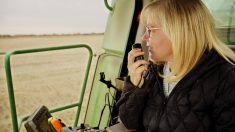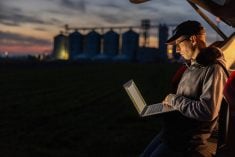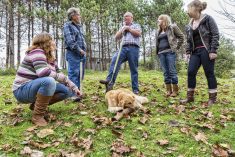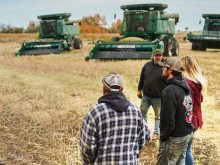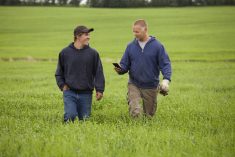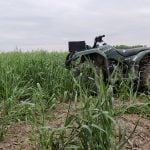Martha, as we’ll call her, is a 51-year-old widow. She owns 3,100 acres in southeastern Manitoba. Her daughter, who we’ll call Alice, is 30. Alice wants to continue the family farm, although her siblings, a brother and a sister, want to continue with their town jobs.
Planning this generational transfer is complex. Martha’s personally held assets add up to $738,000. There is $5.5 million in the farming corporation, $1 million in personally held farm assets plus $419,000 of non-farm assets. There’s also $100,000 of non-farm debt. Martha figures she will need $72,000 per year after tax to sustain her in retirement.
Martha would like to retire next year. However, if she does that, she fears she might run out of money one day. Estimating income for her long life ahead is a challenge. For a solution, Martha consulted Colin Sabourin, a certified financial planner and farm financial advisor based in Winnipeg.
Read Also

Gentle treatments for pain in the neck
Heading toward year-end, people unknowingly tense up against the cold and busyness, causing neck pain that can often be treated with appropriate support and gentle mobility, athletic therapist Kathlyn Hossack says.
As Sabourin sees it, Martha has two choices: sell the farm or receive an income of $80,000 per year from the farm. She can count on $607 in monthly benefits from the Canada Pension Plan at 60. She already receives $4,100 annual CPP survivor’s benefits. And she can start old age security at 65, which is 14 years from now and Sabourin estimates will be $970 per month.
Knowing what Martha needs for retirement helps with putting together a transition plan.
There are two paths to retirement, Sabourin says.
OPTION 1: SELL THE FARM
Sabourin estimates based on current assets, Martha will need $2 million in cash to fund retirement for 49 years to her theoretical death at the age of 90. Assuming the farm (we are not counting non-farm assets) is worth $6.5 million today, the farm could finance a loan of $2,000,000, which at today’s interest rates of six per cent and a 25-year amortization would cost the farm $154,632 per year for a total of $3,865,800 over 25 years.
OPTION 2: AN ANNUAL INCOME FROM THE FARM
Sabourin estimates based on current assets, Martha will need $80,000 gross income per year from the farm increasing with inflation to fund retirement for 49 years to her theoretical death at the age of 90. This would cost the farm $6.45 million over the period of ownership.
The current problems are clear. Martha doesn’t have enough assets to give to her non-farming children — after debt, not including the farm, her net worth is only $319,000. Split between her two non-farming children, that would only be $159,500 each.
Alice would like to buy the farm outright and secure her future. She has heard plenty of stories where the farm was promised to the farming child, only for the parents to change their minds down the road and leave it equally between all children, thus devastating the farming child’s farm operation. However, Alice currently can’t qualify for a loan of $2,000,000 to buy the farm and provide Martha with the funds she needs to retire.
What can Martha do? Sabourin suggests the following compromise: Martha could sell her personal farm assets today and keep the farm corporation for now.
By selling $1 million of personal farm assets, Martha will be able to maximize her capital gains exemption today (in case it goes away someday). Her daughter would be able to qualify for a loan of $1,000,000.
Martha could then keep the corporation and let Alice farm the land the corporation owns for a very low rental price. That would give Alice a chance to get started on the right foot with her farming career. In 10 years, or potentially sooner, Martha co The farm continues, Mom’s retirement is secure and assets provided for non-farming kidsuld transfer the farm corporation.
At that point, and based on her retirement plan at the moment, she could accept an annual withdrawal she would take for the rest of her life. Waiting 10 years to withdraw retirement income from the farm would allow Alice time to get settled into farming.
Alternatively, if farming has been going well, Alice could pay Martha another large sum and buy her completely out at that point. How much Alice would have to pay would depend on Martha’s needs.
Receiving a lump sum today ensures the estate would have some cash to leave to the non-farming kids if Martha were to pass away. Martha will be reducing the amount her non-farming kids will be receiving over the next 10 years as she spends part of the lump sum she received from Alice. That is why it will be important for Alice to buy out the rest of the farm 10 years from now or to start making payments.
Based on this plan, Martha’s non-farm assets would hover around the $1,000,000 mark for the rest of her life. Even though she would be spending her savings to fund her retirement, she would also be paying off her debt while her house would be appreciating in value. Multiple income sources provide a durable safety net.
There’s never a perfect plan, but, Sabourin says, this one allows the farm to continue being successful while taking care of Mom’s retirement and providing assets for her non-farming children.



